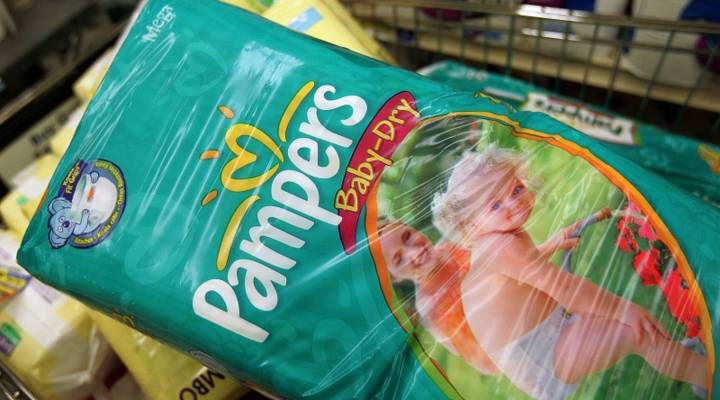
As prices on consumer goods rise, what are you willing to pay?
As prices on consumer goods rise, what are you willing to pay?

This summer, Olivia Sprowell got an early lesson in budgeting. She’s 2 years old, her parents buy her diapers online, and her mom, Kelsey, had noticed that the monthly cost had jumped from $70 to $85.
“And I just thought, these things are way too expensive,” said Kelsey, who’s 33 and lives in Iowa City.
So she and her husband sat Olivia down and broke the news: It’s time to start potty training.
“We said, ‘We’re going to get rid of the diapers, and you’re going to feel better, and we’re going to feel better. Everybody will be proud of you,’” she said
After years of stable prices and even discounts, popular brands of consumer products are getting more expensive. Procter & Gamble, for example, is increasing the price of Pampers by around 4 percent and Bounty, Charmin and Puffs by 5 percent. Unilever and Nestle have raised their prices by around 1 percent.
We asked you to tell us whether you’re noticing price hikes. Here’s some of what you told us:
unless I need it. but what i’m finding, is that they’re making packages smaller. I just bought soups for my parents at Costco, and the containers are much smaller, I think by almost 25%. I still buy them, but it really grinds my gears.
— lola franco (@lolapaloozza) October 31, 2018
My favorite bakery just cut the size of their ham and cheese croissant in HALF. Same price point. See ya, jerks.
— LeftyPoolRat (@LeftyPoolRat) October 31, 2018
Tortilla chips at my local supermarket have been increasing in price recently – up 20% from $1.25/bag to $1.50. I think my “stand in the aisle and really think about it” point is probably still a ways off, closer to $2.50/bag (bags are 12oz, I believe).
— Ian Jutsum (@sanguinepenguin) October 31, 2018
I’m from Missouri. Last night I paid $3.99 for a box of cereal that cost me about $3.29 a couple of weeks ago. I almost didn’t buy it. It may the last time I buy it. I mean, it’s good cereal, but how much is it REALLY worth to me?
— ?RBV? (@singfourlife) October 31, 2018
I have nothing that I truly need. If the price goes up too much, I can do without it. We can all do just fine with less.
— Morgan Combs (@Blueyedleeloo) October 31, 2018
Everybody has a limit to how much they’re willing to pay for a particular product. Consumer products companies like Procter & Gamble and Unilever are always trying to game out how much it is.
And they know that it’s hard for some consumers to walk away.
Take Columbus, Ohio, resident Kelly Kaletsky, who’s 56 and has sensitive teeth. He’s noticed the price of toothpaste for his condition has crept up by almost a dollar in the past few months.
“If I didn’t need it, I would buy the cheapest possible tube of toothpaste anywhere,” Kaletsky said.
Instead, he clips coupons and cuts back on other purchases.
We realize these are all anecdotes. In other words, things that you noticed.
“It could be that you notice that the prices of items that go up, but you don’t notice the prices of items that either stay steady or go down,” said Gus Faucher, chief economist at PNC.
Faucher said prices are going down on some products, like cars and appliances.
Procter & Gamble is still rolling out price hikes. Nestle is considering another round. And it can take months for those to show up in federal inflation numbers.
There’s a lot happening in the world. Through it all, Marketplace is here for you.
You rely on Marketplace to break down the world’s events and tell you how it affects you in a fact-based, approachable way. We rely on your financial support to keep making that possible.
Your donation today powers the independent journalism that you rely on. For just $5/month, you can help sustain Marketplace so we can keep reporting on the things that matter to you.











